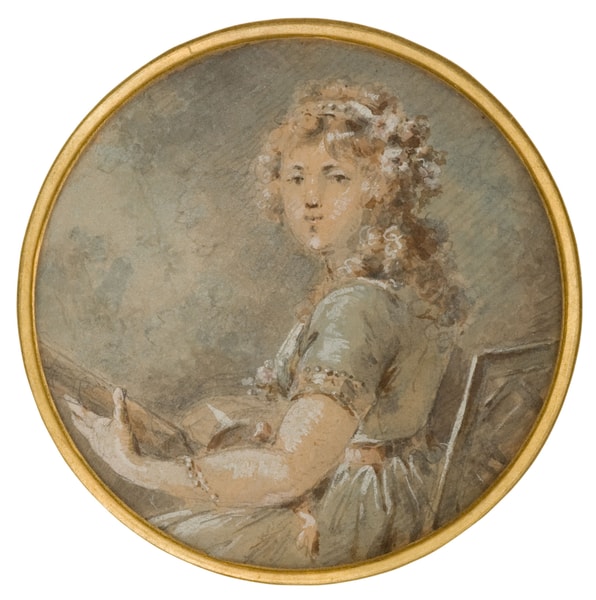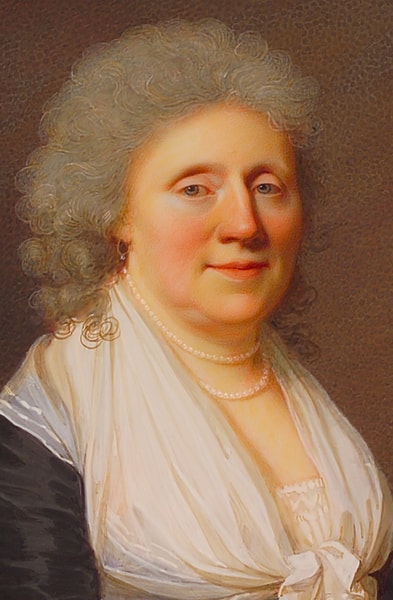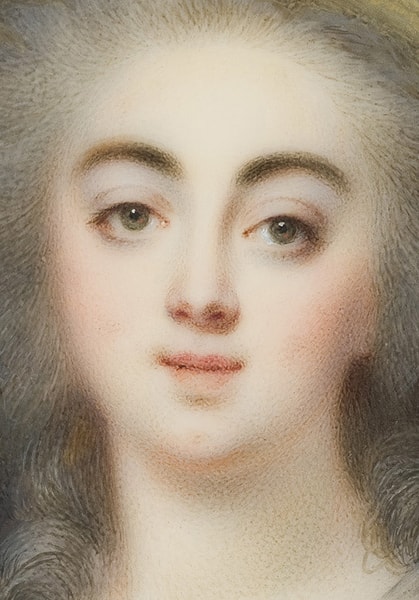
The Painting Procedure
Miniaturists used two fundamentally different techniques to apply paint to the small surface, and to create areas of light and shade and the transitions between them.

Draft designs for miniatures were sketched out roughly in paint on paper. (Claude Jean-Baptiste Hoin: Lady with Guitar, inv. no.: 11301)
Before the vellum or ivory sheet was painted, the artist created a sketch of the model in order to capture his features exactly and, if necessary, to correct them. This sketch was transferred to the paint support with a fine drawing pencil. Alternatively, it could be laid under the semi-transparent ivory sheet as a copy template and transferred with a pen or directly with paint and a brush. The first layer of paint was applied with amazingly wide and free brush strokes.
It served as a priming coat for the later composition. Principally, there were two different methods of painting for clothes and background regarding translucence and structure: the paint could be applied using transparent layers or as opaque body colour. The brushstrokes could be either dotted or broad. Every artist had his own preference. In painting manuals broad strokes are described as the quicker but more difficult variety, whereas the transparent, dotted technique is seen as the easier yet more time-consuming method. The great virtuosi of the gouache painting originated from the Continent: Carriera, Mosnier and Périn, to name just a few.

Some miniaturists used clearly visible dots to paint shade. (Domenico Bossi: Johanna Christina Posse, née Bielke, detail, inv. no.: 10077)
Miniaturists used special sophisticated techniques to paint shiny metal accessories and gems: gold could be depicted using powdered metal, and gems with brightly coloured gloss paints on silver-plated or gilded undercoats.
Modelling using clearly visible dots was a characteristic of many German and Austrian miniatures in the second half of the 18th century; only three of the many artists working in this style – König, Bossi and Füger – will be mentioned here.

Flesh parts painted with translucent colours consist of a large number of tiny strokes and dots. Finishing touches were added using a scraper. (Louis Marie Sicardi: Lady with Straw Hat Decorated with Flowers, detail, inv. no.: 10654)
The flesh parts were the most difficult and time-consuming part of painting. Fundamentally different styles were used to paint them on parchment and on ivory: whilst a thin, skin-tone colour was applied on vellum, with ivory the semi-transparent material itself served as the basic shade. So colours mixed with white were widely used on vellum, but on ivory transparent glazes only were used. After pre-texturing with covering glazes, the face was modelled with fine dots, hatches and strokes, work which was characteristic of miniature painting, because watercolours could not be applied on top of each other in layers on fine smoothed vellum or on ivory without dissolving the coat underneath. The paint did not infiltrate the ivory support, but instead adhered to its surface. The miniaturist used the tip of the scraper to make the painting precise in the flesh parts. In fact, in many miniatures the contours and the fine progression of light to dark shades are just as much the work of the scraper as of the brush; the painted parts were constantly corrected and improved using the blade.